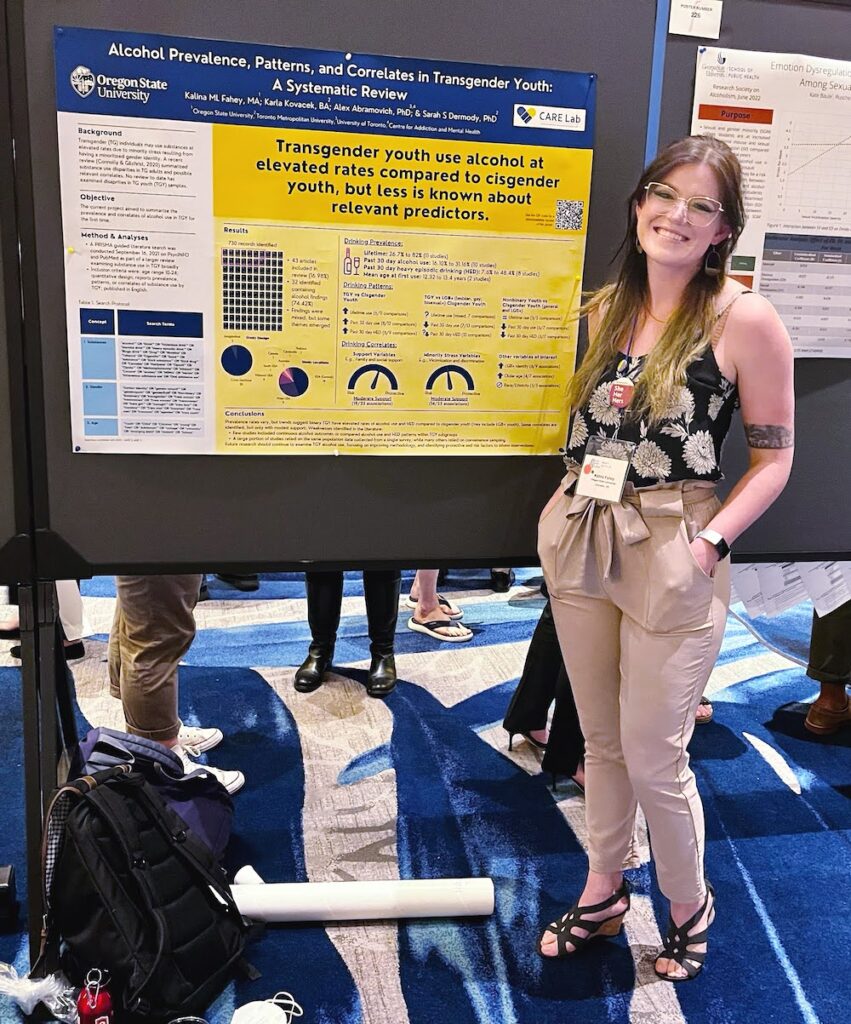Imagine a final exam for a college course with hundreds of students. The proctor, a teacher’s assistant who has not interacted with any of the students before, is walking up and down the rows. She sees motion out of the corner of her eye. A small piece of paper is on the floor, covered in tiny print–answers to questions on the exam. She asks the student in the nearest desk, if the paper is his. Should the proctor believe him?
Most of the decisions we make in day-to-day life are unconscious. We don’t make up lists of pros and cons and consult experts when we have to decide what shoe should I tie first, what foot should enter my car first, or whether to I turn on the blinker 5 seconds or 10 seconds before turning. Having to weigh the pros and cons and carefully consider the consequences of every action would be exhausting, and could even be dangerous.

Zoe Alley, PhD Candidate in Psychology at Oregon State
Deciding whether to trust a stranger, however, is not at all inconsequential. Our brains unconsciously process faces to make decisions such as whether a person is, for example, aggressive, or whether they should be trusted. Zoe Alley, a PhD candidate in Psychology at Oregon State, has spent the last three years studying how facial trustworthiness impacts adolescents and new adults.
“People around the world, from many different cultures, from many different ethnicities, tend to hone in on the same facial characteristics when deciding who they want to trust,” Zoe said. Within the first few seconds of seeing a person’s face for the first time, your brain makes judgments of that person’s aggressiveness and trustworthiness (among other traits.) These snap judgements are often inaccurate, but have appeared consistently enough in participants in psychological studies that it is thought by some to be an evolved trait. Nineteenth and early twentieth century scientists went so far as to provide expert witness at trials, describing “typical” features of criminals. Although this view is no longer considered scientific, the human tendency to attempt to draw conclusions from appearances has been measured, with often concerning results.
As Zoe explains it, it is not clear that we have control over how our brain processes faces. And conscious attempts to address these biases can lead to over-correction, which is also undesirable.

Zoe speaking at GradX 2019 at Oregon State University. The faces shown are the Oosterhof-Todorov faces: computer-generated representations of a trustworthy and an untrustworthy face.
However, knowing how the human mind makes judgments is important. “It can help us make decisions about the structure of our society,” says Zoe. She points out some troubling findings looking at the justice system and elections. A 2004 study found that among a random sample of prison inmates, after controlling for race, people with more “Afrocentric” features received harsher sentences. A study from 2007 showed people contenders for Senate and governor’s races in the US and asked them to choose the more competent candidate, making sure that participants didn’t recognize either candidate. The winner of the race was selected 72% and 68% percent of the time, respectively — a far greater success rate than expected by chance.
Zoe’s own work focuses on how people are affected by facial traits such as trustworthiness, aggressiveness, dominance, and exploitativeness. The data comes from a long running longitudinal study of about 200 boys in Oregon that started in the 1980s. Participants in the study were interviewed about once a year from adolescence into adulthood, with a special focus on understanding antisocial and deviant behaviors such as underage substance use and criminal behavior. Along with interviews, photographs of the participants were taken. However, these photographs had not yet been incorporated in any of the many studies based on the data set.
Processing the data was an enormous task. She analyzed facial structure development across 35 years of data for 200 participants. Each photo had to be considered individually, and to protect privacy she had to drive an hour to a secure facility to do the work. “I’m interested in seeing how facial characteristics develop across time, and how these characteristics alter people’s experience,” says Zoe. “Are people who look less trustworthy more likely to associate with deviant peers?”
Hear more about Zoe’s research findings and personal story this Sunday, June 9, 2019 at 7 pm on KBVR Corvallis 88.7FM. Stream the show live or catch the episode as a podcast in the coming weeks.
You can also watch Zoe’s GradX presentation here.









